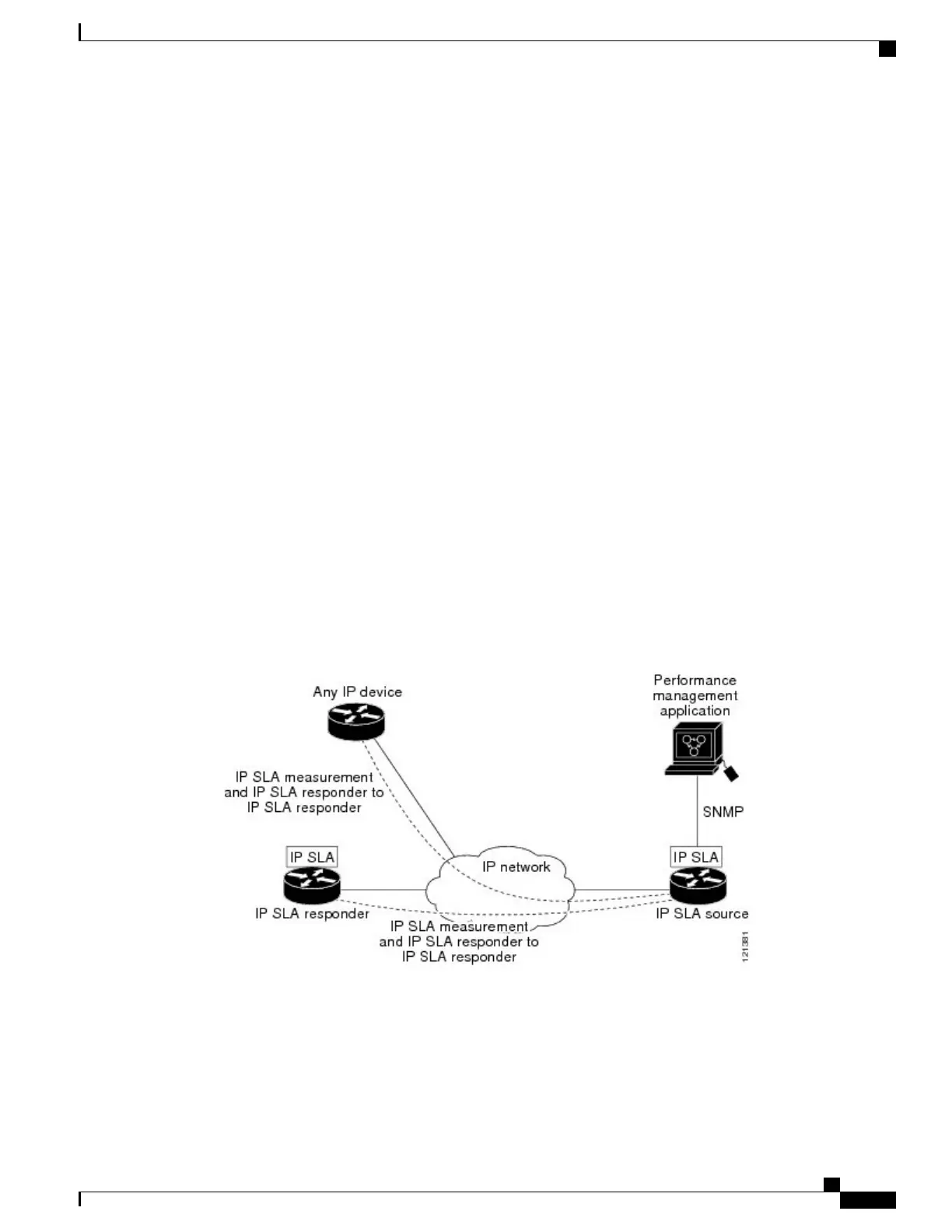◦
Measurement of jitter, latency, or packet loss in the network.
◦
Continuous, reliable, and predictable measurements.
•
IP service network health assessment to verify that the existing QoS is sufficient for new IP services.
•
Edge-to-edge network availability monitoring for proactive verification and connectivity testing of
network resources (for example, shows the network availability of an NFS server used to store business
critical data from a remote site).
•
Network operation troubleshooting by providing consistent, reliable measurement that immediately
identifies problems and saves troubleshooting time.
•
Multiprotocol Label Switching (MPLS) performance monitoring and network verification (if the switch
supports MPLS).
Network Performance Measurement with Cisco IOS IP SLAs
You can use IP SLAs to monitor the performance between any area in the network—core, distribution, and
edge—without deploying a physical probe. It uses generated traffic to measure network performance between
two networking devices.
The following figure shows how IP SLAs begin when the source device sends a generated packet to the
destination device. After the destination device receives the packet, depending on the type of IP SLAs operation,
it responds with time-stamp information for the source to make the calculation on performance metrics. An
IP SLAs operation performs a network measurement from the source device to a destination in the network
using a specific protocol such as UDP.
Figure 113: Cisco IOS IP SLAs Operation
Related Topics
Monitoring IP SLA Operations, on page 2031
Consolidated Platform Configuration Guide, Cisco IOS Release 15.2(4)E (Catalyst 2960-X Switches)
2027
Information About SLAs

